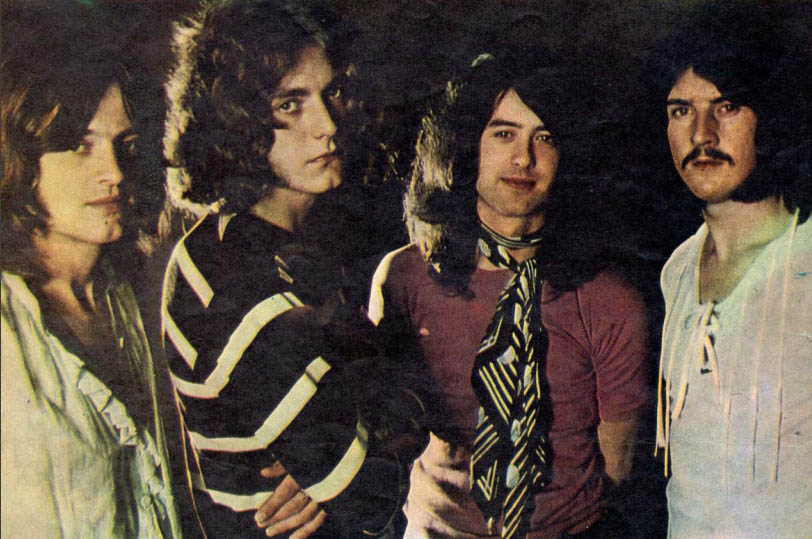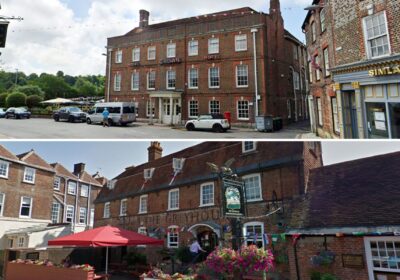IT’S an iconic album cover known by millions of music fans around the world; an old thatcher, stooped in a field, a bundle of hazel on his back.
He adourns the wordless cover of the Led Zeppelin IV album, by the band of the same name, which was released on November 8, 1971 and went on to sell more than 37 million copies worldwide.
But the identity of the man in the photograph has remained a mystery for more than half a century – until now.
Wiltshire Museum has revealed the man is a late-Victorian photograph, the original of which has been recently discovered in a photo album.
The discovery was made by Brian Edwards, a Visiting Research Fellow with the Regional History Centre at the University of the West of England, and is in the museum collections.
And it is believed the man featured is Lot Long – sometimes known as Longyear – who was born in Mere in 1823 and died in 1893.
At the time the photograph was taken, Lot was a widower, living in a small cottage in Shaftesbury Road, Mere.
“Led Zeppelin created the soundtrack that has accompanied me since my teenage years, so I really hope the discovery of this Victorian photograph pleases and entertains Robert, Jimmy, and John Paul,” said Brian.

The original photo, featuring thatcher Lot Long, has been found at Wiltshire Museum
A part signature matching the writing in the album suggests the photographer is Ernest Howard Farmer (1856-1944), the first head of the School of Photography at the then newly renamed Polytechnic Regent Street.
Now part of the University of Westminster, Farmer had worked in the same building as the instructor of photography since 1882, when it was then known as the Polytechnic Young Men’s Christian Institute.
The picture used for the album cover is believed to have been found by Led Zeppelin lad singer, Robert Plant, in an antique shop near guitarist Jimmy Page’s house in Berkshire.
It is often mistaken for a painting, but is in fact a coloured photograph, the whereabouts of which is now unknown.
The black and white original Victorian photograph was discovered during ongoing research extending from the Ways of Seeing Wiltshire exhibition, which ran in 2021, curated by Brian in partnership with Wiltshire Museum.
The newly-discovered photograph will now feature in a new display at the museum, entitled The Wiltshire Thatcher – a Photographic Journey through Victorian Wessex.
The exhibition celebrates the work of Ernest Farmer, who today is little-known but was a leading figure in the development of photography as an art form.
Through the exhibition, the museum aims to show how Farmer captured the spirit of people, villages and landscapes of Wiltshire and Dorset that were so much of a contrast to his life in London.
“It is fascinating to see how this theme of rural and urban contrasts was developed by Led Zeppelin and became the focus for this iconic album cover 70 years later,” a spokesperson said.

Led Zeppelin; from left; John Paul Jones, Robert Plant, Jimmy Page and John Bonham
“From paintings to photographs and artefacts to memories, Edwards’ research involved monitoring everyday sources that stimulates public engagement with Wiltshire’s past.
“While following up on some early photographs of Stonehenge, Edwards came across the Victorian photograph Led Zeppelin made familiar over half a century ago.”
The exhibition, which is set to run between April 6 and September 15 next year, will feature photographs from Wiltshire, Dorset and Somerset, found in the album, which contained more than 100 architectural views and street scenes, together with a few portraits of rural workers.
Most of the photographs are titled and beneath the photograph made famous by Led Zeppelin, the photographer has written, ‘A Wiltshire Thatcher’. The Victorian photograph album is titled ‘Reminiscences of a visit to Shaftesbury. Whitsuntide 1892. A present to Auntie from Ernest.’
For more information on the museum and the exhibition, log on to wiltshiremuseum.org.uk.










Leave a Reply